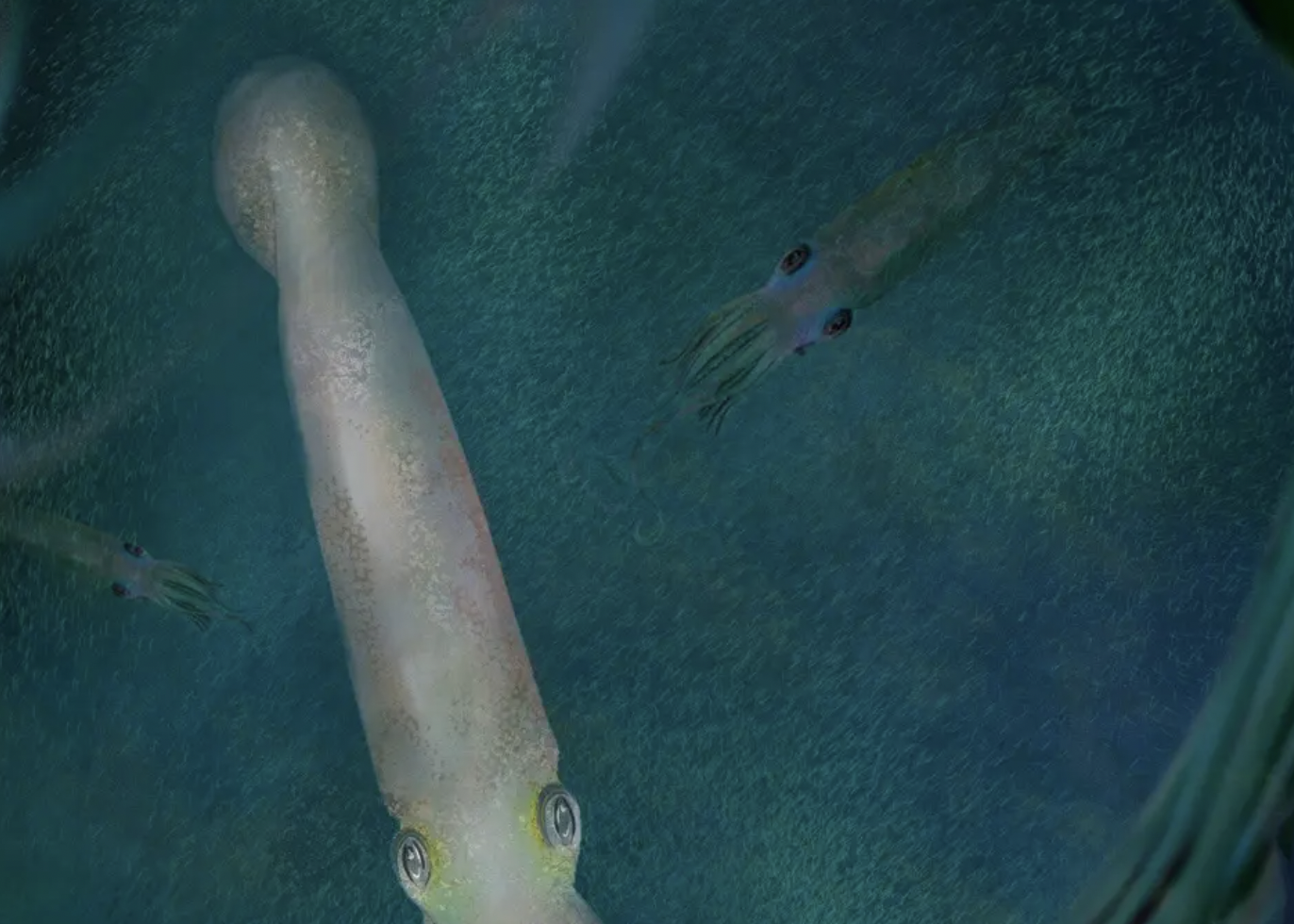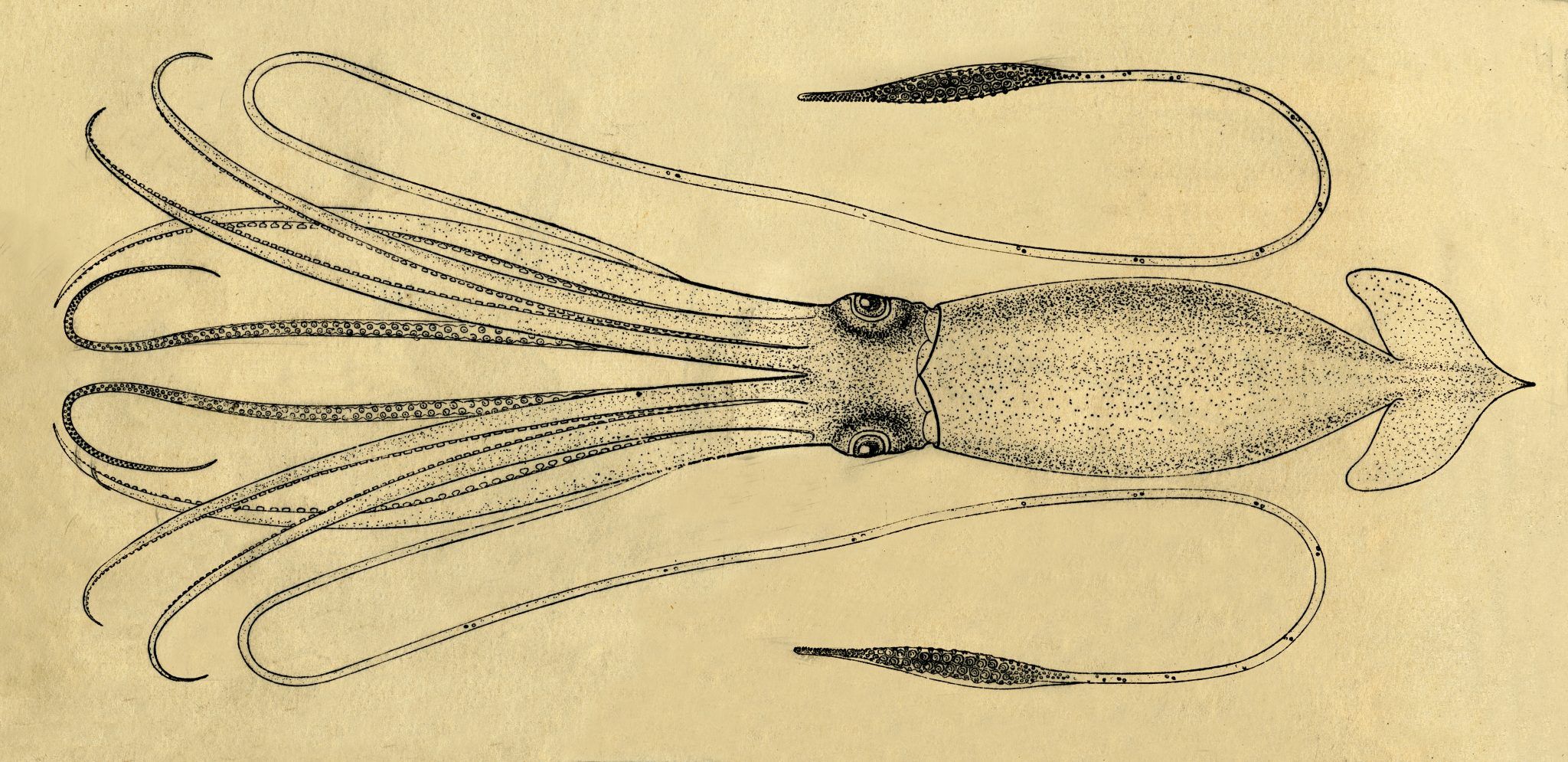Extra legs means extra scary
A prehistoric squid with 10 arms, dubbed a ‘primitive vampire’, has been named after US President Joe Biden – millions of years after it lived on Earth.
Syllipsimopodi bideni is a distant relative of modern-day cephalopods like octopi, only with two extra legs. They hunted the oceans some 328 million years ago but recent developments and further analysis have provided scientists with a new outlook on their evolution.

A fossil of the creature was discovered in 1988 at the Mississippian Bear Gulch in Montana, one of the best-preserved fossil sites in the world, and donated to the Royal Ontario Museum in Canada.
Dr Christopher Whalen, along with Neil Landman, a curator emeritus at the American Museum of Natural History, described the new species in the journal Nature Communications on Tuesday.
During their new analysis of the fossil, the researchers found that the species had 10 arms with suckers, and dated back 328 million years – 82 million years older than the previous earliest record.
Dr Whalen, an expert on such organisms and the man behind Biden’s new namesake, said: “This is the first and only known vampyropod to possess ten functional appendages.”
The squid was considered vampiric not because of its diet but because the dark skin connecting its arms looked almost like Dracula’s iconic cape.

Whalen submitted his paper on the squid in the journal Nature Communications when Biden was inaugurated on 20 January 2021.
So why name this ancient horror after the president?
“I wanted to somehow acknowledge the moment in a way that was more positive and forward-looking,” Dr Whalen explained.
“I was encouraged by the plans President Biden put forward to counter anthropogenic climate change, and his general sentiment that politicians should listen to scientists.”
The origins of such Vampyropods are still relatively unknown but their soft bodies meant that they were rarely fossilised. That’s why the Biden squid is such a rare find.
Professor Neil Landman, co-author of the paper, said: “Syllipsimopodi may have filled a niche more similar to modern squids, a mid-level aquatic predator.

“It is not inconceivable it might have used its sucker-laden arms to pry small ammonoids out of their shells or ventured more inshore to prey on brachiopods, bivalves or other shelled marine animals.”
Upon scanning the fossil, Whalen and Landman discovered it was a completely new genus and the oldest cephalopod specimen ever recorded.
Upon further analysis, previous assumptions about the number of arms were confirmed, which Whalen says is one of the “defining characteristics separating the 10-armed squid and cuttlefish line from the eight-armed octopus and vampire squid line.”
He continued: “We have long understood that octopuses achieve the eight-arm count through elimination of the two filaments of vampire squid, and that these filaments are vestigial arms.
“However, all previously reported fossil vampyropods preserving the appendages only have 8 arms. This fossil is arguably the first confirmation of the idea all cephalopods ancestrally possessed ten arms.”
Related links:
- Scientists have created robot bugs- have they not watched Black Mirror?
- Mystery surrounding Tutankhamun’s ‘space dagger’ made of metal from a meteorite finally solved
- Scientist claims life after death is impossible and we should all move on






































